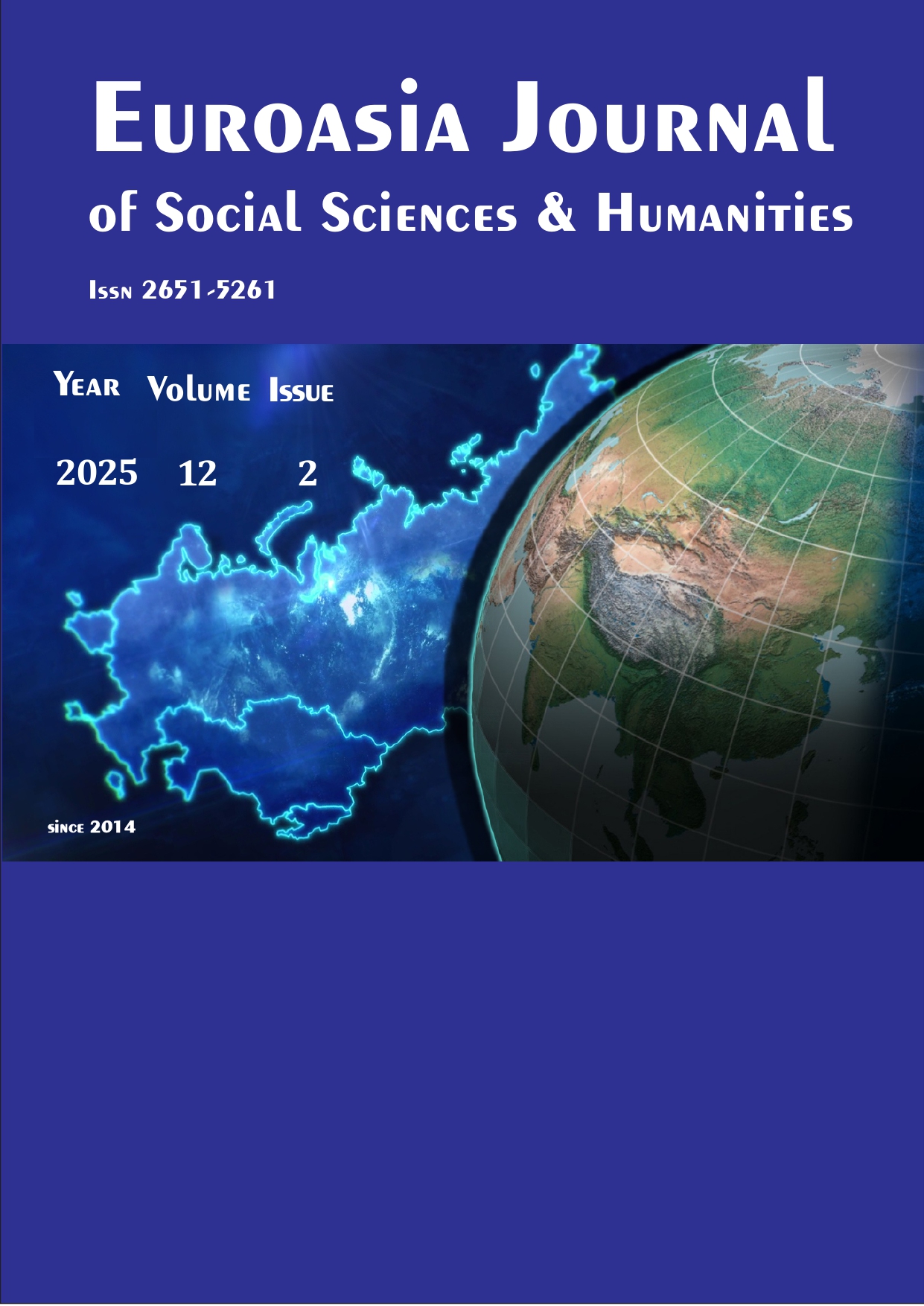FARKLI KÜLTÜRLERDE VE KİŞİLİK TİPLERİNDE ÖDEME SANCISI
DOI:
https://doi.org/10.5281/zenodo.15306603Anahtar Kelimeler:
Ödeme sancısı, kişilik tipi, market alışverişiÖzet
Ödeme acısı, zihinsel muhasebe teorisinin bir uzantısı olarak davranışsal ekonomi literatüründe bilişsel önyargılar altında yer alan kavramlardan biridir. Bu kavram, bireyin satın alma deneyimi sırasında zihinsel muhasebe süreçlerinin yarattığı duygusal etkilere odaklanmaktadır. Zaman içinde ödeme yöntemlerinin çeşitlenmesi ve teknolojinin ilerlemesiyle birlikte ödeme acısı kavramı güncelliğini korumuştur. Çeşitli ödeme yöntemlerinin ve alışveriş senaryolarının duygusal etkileri üzerine yapılan araştırmalar, ödeme acısının farklı durumlarda nasıl şekillendiğini ortaya koymuştur. Bu çalışmanın amacı, ödeme acısı kavramını kültür ve kişilik tipi bağlamında incelemektir. Ödeme acısı kavramının literatürde genellikle temel bir duygu olarak ele alındığı, ancak bu duygunun altında yatan kültürel ve psikolojik faktörlerin yeterince araştırılmadığı görülmektedir. Çalışma, ödeme acısının Almanya ve Türkiye gibi farklı kültürlerde kişilik tipleri ve kültürel kimlik tarafından nasıl şekillendirildiğini incelemektedir. Gerçek bir alışveriş deneyimini simüle eden bir web sitesi üzerinden yürütülen araştırma, SPSS 30.0 ve Andrew F. Hayes'in Process v4.2 yazılımını kullanarak kişilik tiplerinin ve ödeme yöntemlerinin ödeme acısı üzerindeki etkilerini analiz etmektedir. Sonuçlar, kişilik tiplerinin kültür ve ödeme acısı arasındaki ilişkide anlamlı bir aracılık etkisine sahip olduğunu göstermektedir. Öte yandan, ödeme yöntemlerinin aracılık etkisinin analizinde anlamlı bir sonuç bulunamamıştır.
İndirmeler
Referanslar
Banker, S., Dunfield, D., Huang, A., & Prelec, D. (2021). Neural mechanisms of credit card spending. Scientific Reports, 11(1), 4070. https://doi.org/10.1038/s41598-021-83488-3
Bagchi, R., & Block, L. G. (2011). Chocolate cake please! Why do consumers indulge more when it feels more expensive? Journal of Public Policy & Marketing, 30(2), 294–306.
Goldberg, L. R. (1992). The development of markers for the Big-Five factor structure. Psychological Assessment, 4(1), 26–42.
Hayes, A. F. (2018). Introduction to mediation, moderation, and conditional process analysis: A regression-based approach (2nd ed.). The Guilford Press.
Kahneman, D., & Tversky, A. (1983). Choices, values, and frames. American Psychological Association, 39(4), 341-350.
Levav, J., & McGraw, A. P. (2009). Emotional accounting: How feelings about money influence consumer choice. Journal of Marketing Research, 46(1), 66–80. https://doi.org/10.1509/jmkr.46.1.66
Liu, Y., & Dewitte, S. (2021). A replication study of the credit card effect on spending behavior and an extension to mobile payments. Journal of Retailing and Consumer Services, 60, 102472. https://doi.org/10.1016/j.jretconser.2021.102472
Loewenstein, G. (2000). Emotions in economic theory and economic behavior. American Economic Review, 90(2), 426–432. https://doi.org/10.1257/aer.90.2.426
Mazar, N., Plassmann, H., & Robitaille, N. (2016). Pain of paying? A metaphorical evidence from neural and behavioral science. SSRN Electronic Journal, 1–51. https://doi.org/10.2139/ssrn.2901808
Prelec, D., & Loewenstein, G. (1998). The red and the black: Mental accounting of savings and debt. Marketing Science, 17(1), 4–28. https://doi.org/10.1287/mksc.17.1.4
Reshadi, F. (2020). Three essays on the effect of pain-of-payment on consumers' financial decisions (Doctoral dissertation, West Virginia University).
Shah, A. M. (2015). “What’s pain got to do with it?”: How the pain of payment influences our choices and our relationships. (Doctoral dissertation, Duke University).
Shah, A. M., Eisenkraft, N., Bettman, J. R., & Chartrand, T. L. (2016). “Paper or plastic?”: How we pay influences post-transaction connection. Journal of Consumer Research, 42, 688–708. https://doi.org/10.1093/jcr/ucv056
Statista. (2024a). Ranking of the most purchased fast moving consumer goods (FMCG) in Germany from 2021 to 2023. Retrieved August 10, 2024, from https://www.statista.com/statistics/516475/food-retail-best-selling-fmcg-germany/#:~:text=The%20top%20three%20best%2Dselling,bought%20during%20the%20timeline%20shown.
Statista. (2024b). Regularly consumed groceries in Turkey as of June 2024. Retrieved August 11, 2024, from https://www.statista.com/forecasts/1002988/regularly-consumed-groceries-in-turkey
Tatar, A. (2017). Büyük Beş-50 kişilik testinin Türkçeye çevirisi ve Beş Faktör Kişilik Envanteri Kısa Formu ile karşılaştırılması. Anadolu Psikiyatri Dergisi, 18(1), 51–61.
Thaler, R. (1985). Mental accounting and consumer choice. Marketing Science, 4(3), 199–214.
Thaler, R. H. (1999). Mental accounting matters. Journal of Behavioral Decision Making, 12(3), 183-206. https://doi.org/10.1002/(SICI)1099-0771(199909)12:3<183::AID-BDM318>3.0.CO;2-F
Thaler, R. H., & Sunstein, C. R. (2008). Nudge: Improving decisions about health, wealth, and happiness. Yale University Press.
Yeung, K. L. (2014). Exploring the origin of pain of payment in cash and its relevance to computer payment interface (Doctoral dissertation, Iowa State University).
Zellermayer, O. (1996). The pain of paying. Dissertation submitted to the Department of Social and Decision Sciences for the degree of Doctor of Philosophy in Behavioral Decision Making and Marketing, Carnegie Mellon University.
İndir
Yayınlanmış
Nasıl Atıf Yapılır
Sayı
Bölüm
Lisans
Telif Hakkı (c) 2025 EUROASIA JOURNAL OF SOCIAL SCIENCES & HUMANITIES

Bu çalışma Creative Commons Attribution-NonCommercial 4.0 International License ile lisanslanmıştır.

